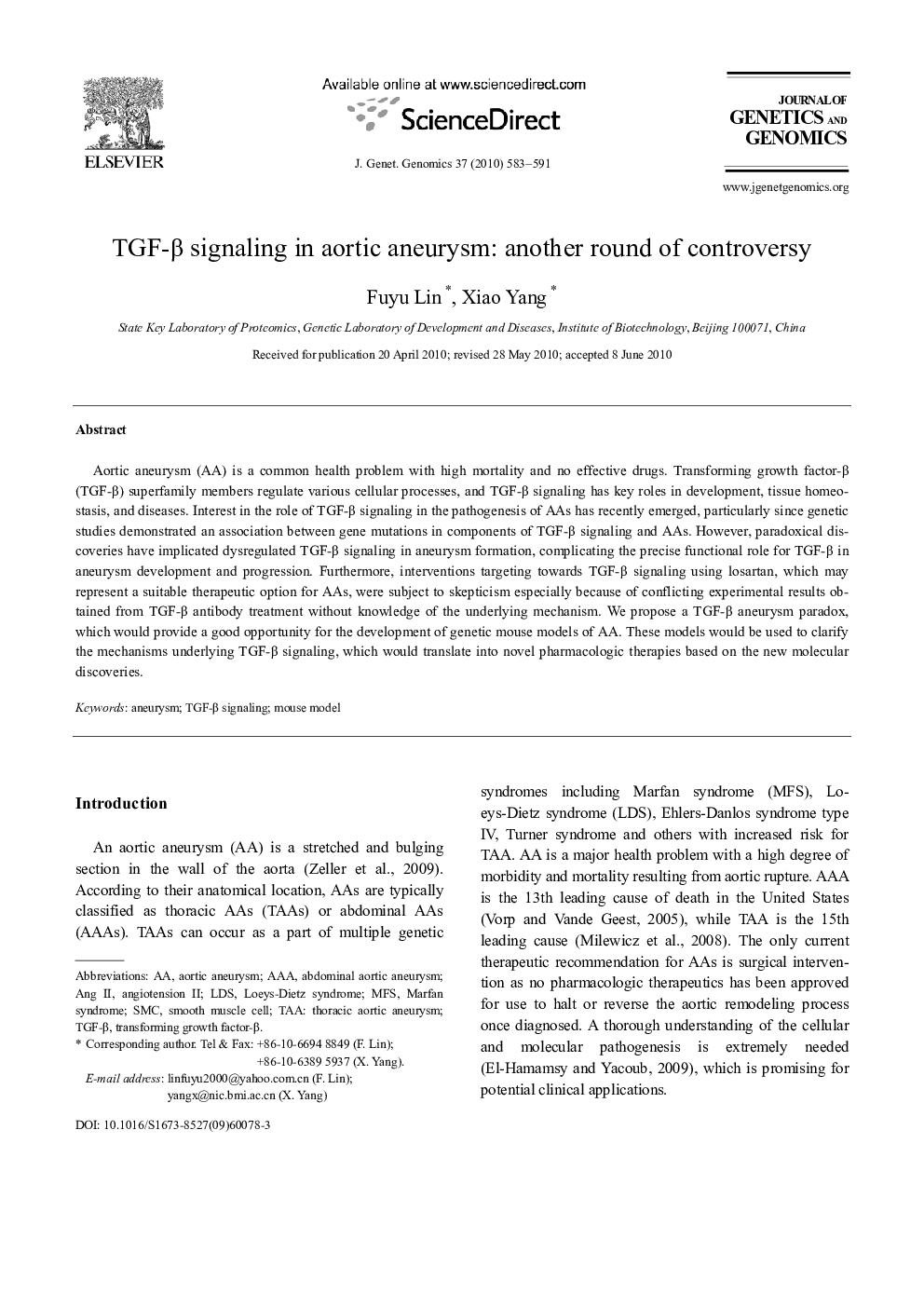| Article ID | Journal | Published Year | Pages | File Type |
|---|---|---|---|---|
| 2787741 | Journal of Genetics and Genomics | 2010 | 9 Pages |
Aortic aneurysm (AA) is a common health problem with high mortality and no effective drugs. Transforming growth factor-β (TGF-β) superfamily members regulate various cellular processes, and TGF-β signaling has key roles in development, tissue homeostasis, and diseases. Interest in the role of TGF-β signaling in the pathogenesis of AAs has recently emerged, particularly since genetic studies demonstrated an association between gene mutations in components of TGF-β signaling and AAs. However, paradoxical discoveries have implicated dysregulated TGF-β signaling in aneurysm formation, complicating the precise functional role for TGF-β in aneurysm development and progression. Furthermore, interventions targeting towards TGF-β signaling using losartan, which may represent a suitable therapeutic option for AAs, were subject to skepticism especially because of conflicting experimental results obtained from TGF-β antibody treatment without knowledge of the underlying mechanism. We propose a TGF-β aneurysm paradox, which would provide a good opportunity for the development of genetic mouse models of AA. These models would be used to clarify the mechanisms underlying TGF-β signaling, which would translate into novel pharmacologic therapies based on the new molecular discoveries.
